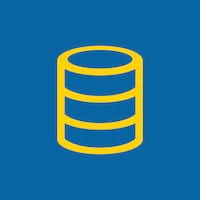
Alcohol QCM Sensor
Donated on 7/21/2019
Five different QCM gas sensors are used, and five different gas measurements (1-octanol, 1-propanol, 2-butanol, 2-propanol and 1-isobutanol) are conducted in each of these sensors.
Dataset Characteristics
Multivariate
Subject Area
Computer Science
Associated Tasks
Classification, Regression, Clustering
Feature Type
Real
# Instances
125
# Features
8
Dataset Information
Additional Information
In the dataset there are 5 types of dataset. QCM3, QCM6, QCM7, QCM10, QCM12 In each of dataset, There is alcohol classification of five types, 1-octanol, 1-propanol, 2-butanol, 2-propanol, 1-isobutanol
Has Missing Values?
No
Introductory Paper
By M. F. Adak, P. Lieberzeit, P. Jarujamrus, N. Yumusak. 2020
Published in Engineering Science and Technology, an International Journal
Variable Information
The gas sample is passed through the sensor in five different concentrations. These concentrations are, Concentration Air ratio (ml) Gas ratio (ml) 1 0.799 0.201 2 0.700 0.300 3 0.600 0.400 4 0.501 0.499 5 0.400 0.600 There are two channels in the sensor. One of these circles forms channel 1, and the other forms channel 2. MIP and MP ratios used in the QCM sensors are, Sensor name MIP ratio NP ratio QCM3 1 1 QCM6 1 0 QCM7 1 0.5 QCM10 1 2 QCM12 0 1
Dataset Files
| File | Size |
|---|---|
| QCM Sensor Alcohol Dataset/QCM6.csv | 2.3 KB |
| QCM Sensor Alcohol Dataset/QCM3.csv | 2.3 KB |
| QCM Sensor Alcohol Dataset/QCM12.csv | 2.3 KB |
| QCM Sensor Alcohol Dataset/QCM10.csv | 2.2 KB |
| QCM Sensor Alcohol Dataset/QCM7.csv | 2.2 KB |
pip install ucimlrepo
from ucimlrepo import fetch_ucirepo # fetch dataset alcohol_qcm_sensor = fetch_ucirepo(id=496) # data (as pandas dataframes) X = alcohol_qcm_sensor.data.features y = alcohol_qcm_sensor.data.targets # metadata print(alcohol_qcm_sensor.metadata) # variable information print(alcohol_qcm_sensor.variables)
Adak, M., Lieberzeit, P., Jarujamrus, P., & Yumusak, N. (2019). Alcohol QCM Sensor [Dataset]. UCI Machine Learning Repository. https://doi.org/10.24432/C5KC7M.
Creators
M. Adak
Peter Lieberzeit
Purim Jarujamrus
Nejat Yumusak
DOI
License
This dataset is licensed under a Creative Commons Attribution 4.0 International (CC BY 4.0) license.
This allows for the sharing and adaptation of the datasets for any purpose, provided that the appropriate credit is given.